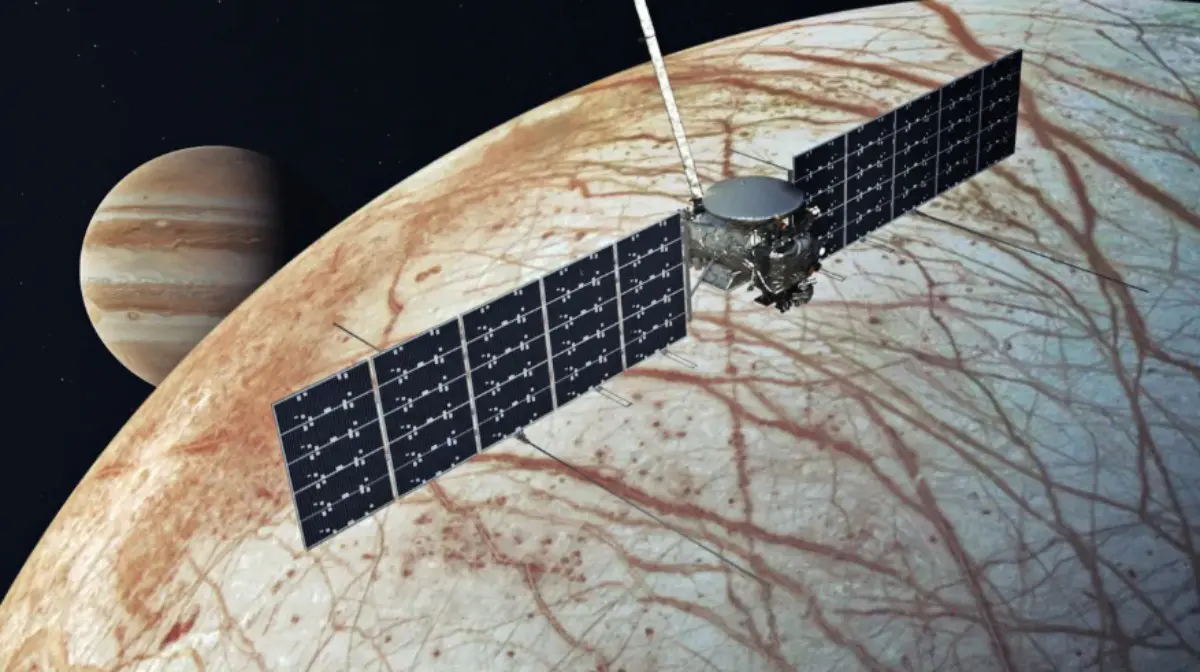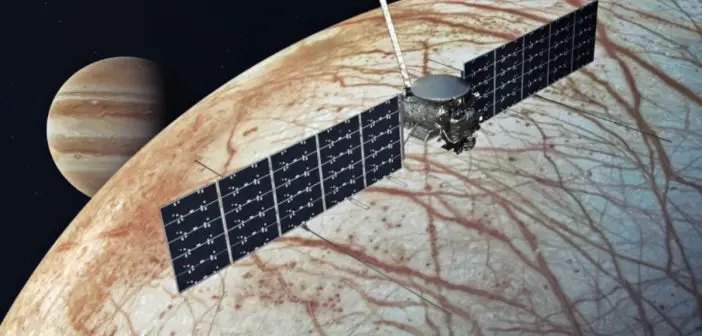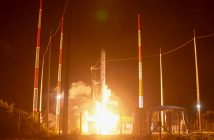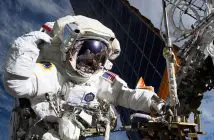
NASA officials have given the Europa Clipper spacecraft the green light to head into space onboard a Falcon Heavy rocket on October 10, 2024. The probe, which will head towards Jupiter to study its Galilean moon, Europa, recently passed a crucial technical review called Key Decision Point E (KDP-E), clearing the way for its launch.
“Scientists believe that Jupiter’s icy moon Europa has suitable conditions below its surface to support life,” NASA Science Mission Directorate Associate Administrator Nicola Fox told media on September 10 (AEST). “Those ingredients are water, energy, and chemistry. Studying this by flying close to that moon and flying through the plumes that come up will help us better understand the astrobiology and the potential for habitable worlds beyond our own planet.”
The spacecraft, developed by NASA in partnership with the Johns Hopkins University Applied Physics Laboratory, will take around five and a half years to travel the 628 million kilometres to Europa. Once there, it will spend approximately four years observing the moon and conducting scientific experiments, going as close as 25 kilometres to the surface. The cost of the mission will top USD5.2 billion.
“Space is not for the faint-hearted, and it’s even more ambitious as this spacecraft, the largest that NASA has ever built for planetary exploration, will travel into the incredibly harsh radiation environment around Jupiter,” said Fox.
The launch clearance represents a sharp turnaround for the mission which as recently as May was experiencing engineering issues. Specifically, engineers realised that Clipper’s transistors, which control the flow of electricity on the spacecraft, could fail at lower radiation levels than previously thought. But after an exhaustive round of recent testing and analysis, NASA decided that the spacecraft’s systems should last the distance.
“We concluded, after all of this testing, that during our orbits around Jupiter, while Europa Clipper does dip into the radiation environment, once it comes out, it comes out long enough to give those transistors the opportunity to heal and partially recover between flybys,” said Europa Clipper Project Manager Jordan Evans. “I personally have high confidence that we can complete the original mission for exploring Europa as planned.”
NASA has enclosed Europa Clipper’s payload and other electronics in a thick-walled vault made of titanium and aluminium that will act as a radiation shield against most of the high-energy atomic particles and hopefully slow down the degradation of the spacecraft’s systems. This is a tactic learned and used by NASA’s Juno mission to Jupiter.
Europe Clipper’s key mission objectives are to produce high-resolution images of Europa’s surface, determine its composition, look for signs of recent or ongoing geological activity, measure the thickness of the moon’s icy shell, search for subsurface lakes, and determine the depth and salinity of Europa’s ocean.
“Our launch window opens on October 10, and the spacecraft will lift off from the Kennedy Space Center,” said Fox. “We’re excited and ready to carry out Europa’s mission as planned, including the baseline science plan we had before we discovered the transistor issues. We are now confident we can deliver that mission.”





